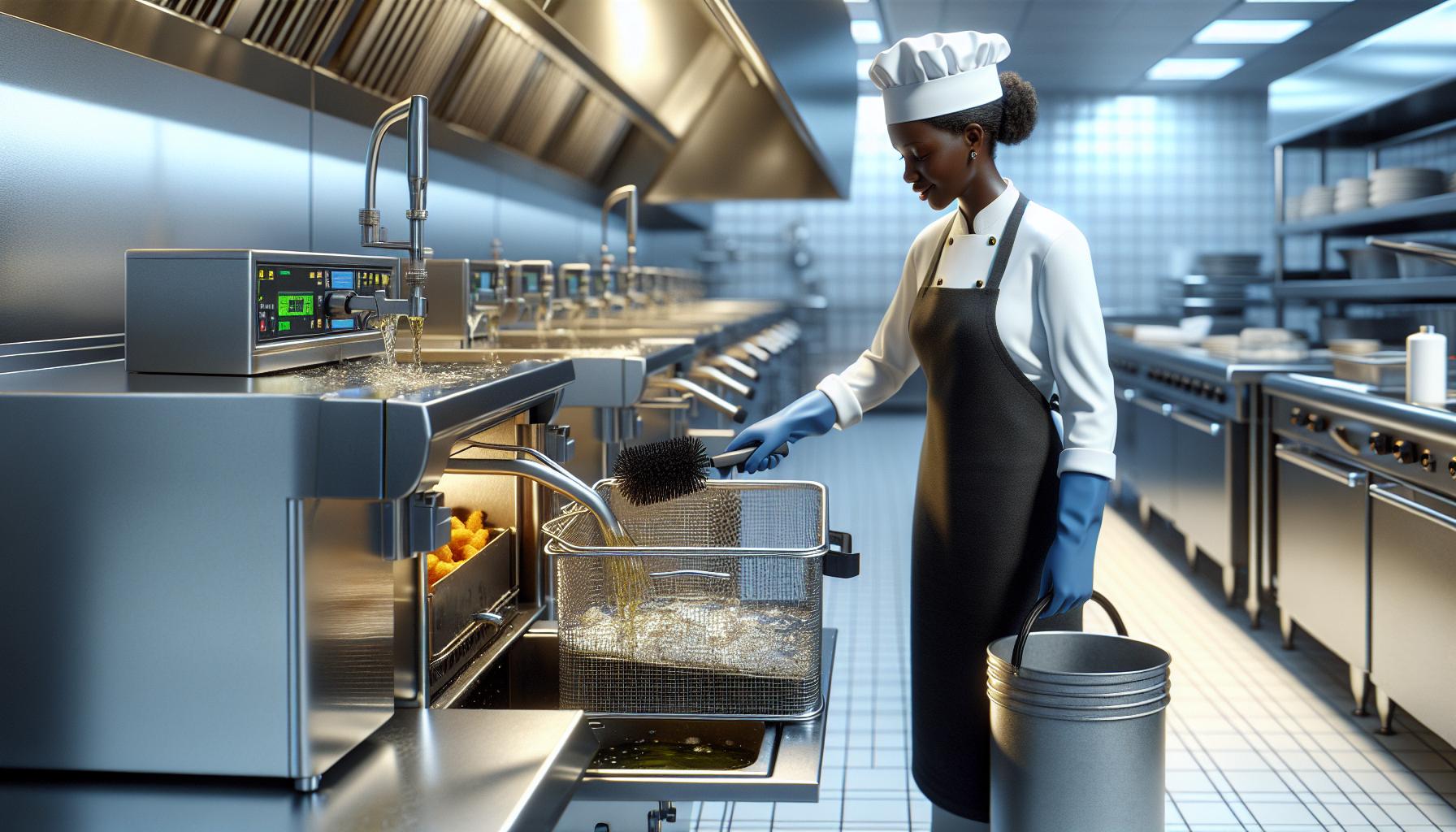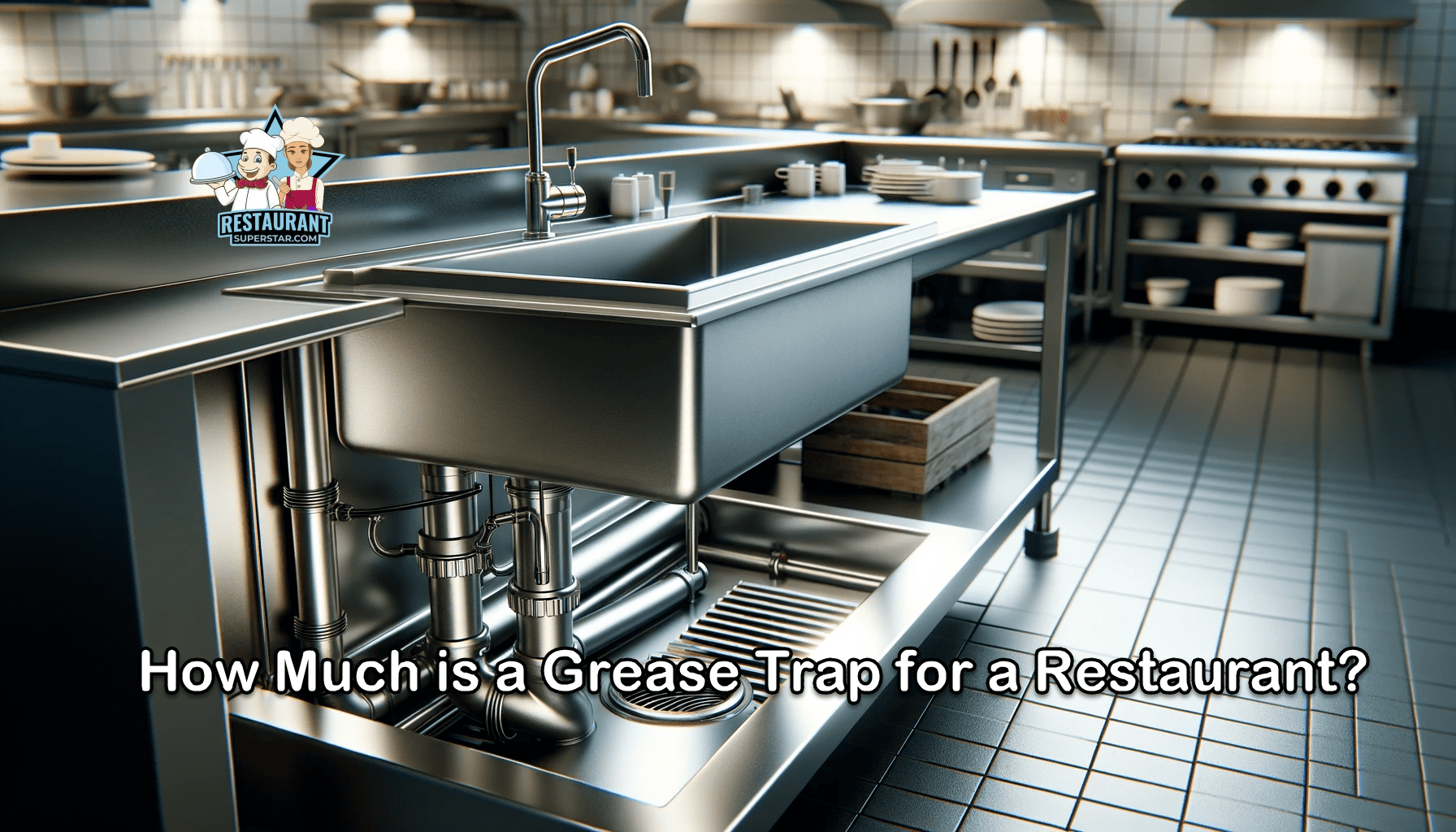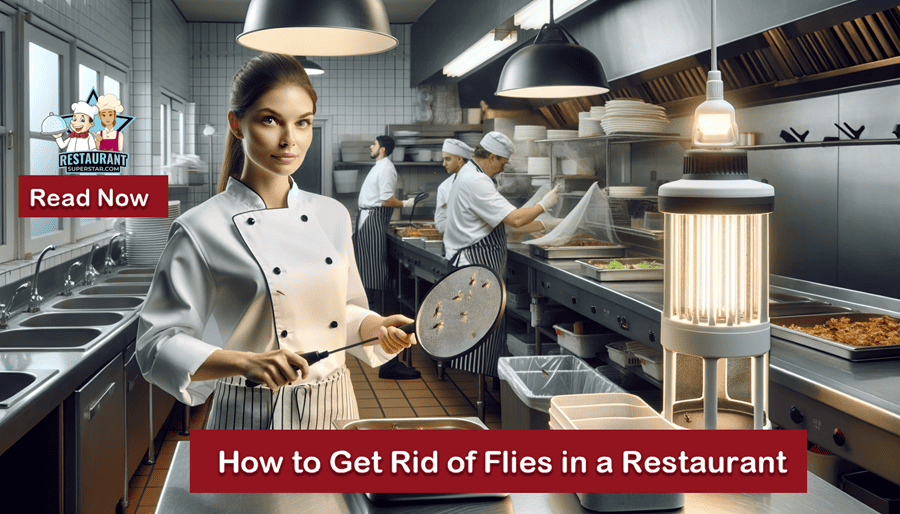How Often Should You Clean a Commercial Fryer for Optimal Performance?
When it comes to running a successful kitchen, cleanliness isn’t just a virtue—it’s a necessity. One of the most critical pieces of equipment demanding your attention is the commercial fryer.
Used daily in bustling kitchens to create crispy delights, this powerhouse can quickly become a hotspot for grease and grime. But how often should you be cleaning it to ensure top-notch performance and safety?
I’ve seen firsthand how a well-maintained fryer can elevate food quality and extend the equipment’s lifespan. Regular cleaning isn’t just about meeting health standards; it’s about preserving the flavor integrity of your dishes and avoiding costly repairs. In this article, we’ll explore the ideal cleaning frequency and share tips to keep your fryer in prime condition. Whether you’re a seasoned chef or new to the culinary world, understanding this essential routine can make all the difference in your kitchen’s success.
Importance Of Regular Cleaning
Regular cleaning of a commercial fryer is crucial for several reasons, ranging from compliance with health regulations to maintaining the quality of the food served. When fryers are clean, they operate more efficiently, ensuring consistent cooking temperatures. Efficiency reduces energy consumption and minimizes costs, benefiting the bottom line.
A key benefit of regular cleaning is improved food safety. Dirty fryers can harbor harmful bacteria and residues, affecting the taste and safety of the food prepared. Unpleasant flavors might result if old oil residues mix with fresh oil. Consistent cleaning prevents oil degradation, achieving better-tasting dishes.
Equipment longevity is another advantage. Fryers endure heavy use in a commercial setting, and neglecting their maintenance can lead to early wear and tear. Regular cleaning not only preserves the machine’s integrity but also decreases repair and replacement expenses. Cleaners should pay special attention to key parts like baskets and heating elements for optimal results.
Consistently cleaning the fryer contributes to a safer work environment. Grease buildup can lead to slips, falls, and even fires in extreme cases. Regular maintenance avoids such hazards, keeping employees safe and operations uninterrupted. Staff adherence to cleaning schedules ensures that fryers remain safe, reducing workplace accidents.
Factors Influencing Cleaning Frequency

Several critical factors determine how often a commercial fryer requires cleaning. Recognizing these elements ensures fryers maintain both peak performance and food safety standards.
Type Of Food
The type of food cooked affects cleaning frequency considerably. Foods like fish or breaded items release more particles into the oil, necessitating more frequent cleaning. These particles not only dirty the oil faster but also accumulate in the fryer, forming a residue. In contrast, items like potatoes or non-breaded meats contribute less waste to the oil. If fryers consistently cook breadcrumb-laden foods, the equipment reflects wear quicker. Less residue equates to less frequent cleanings and optimal operational efficiency. Monitoring the type of food allows more precise scheduling and effective maintenance.
Volume Of Use
High-volume fryers demand more frequent cleanings. When fryers run continually or for extended periods each day, they accumulate residues faster. The cooking frequency and quantity contribute to how quickly oil and fryers reach saturation. High usage wears on components, requiring extra attention to avoid breakdowns. Conversely, fryers serving fewer meals daily maintain cleanliness over prolonged intervals. But even less-used fryers accumulate buildup over time, highlighting the necessity for occasional maintenance despite lower use. Tracking the daily and weekly usage metrics guides the ideal cleaning timeline.
Oil Quality
Oil quality directly influences cleaning frequency in a commercial fryer. Poor-quality oil degrades quickly and encourages faster residue accumulation, necessitating more routine cleanings. Conversely, high-quality oil maintains integrity under frequent use, extending periods between cleanings. Monitoring oil degradation through methods like visual examination or testing prolongs fryer usability. The oil’s smoke point, absorption rate, and filtration quality further impact the maintenance schedule. Utilizing premium oil options maximizes fryer longevity and efficiency while minimizing cleaning requirements.
Recommended Cleaning Schedule

Keeping a commercial fryer clean involves a structured routine, ensuring its longevity and performance. Here’s an efficient cleaning schedule broken down by frequency.
Daily Maintenance
Daily maintenance keeps commercial fryers operating smoothly. Clean the fryer’s interior and exterior surfaces to remove grease and food particles, ensuring safe operation and consistent food quality. Start by letting the oil cool, then drain it into a designated container. Use a metal spatula to scrape debris and residue from the fryer’s interior surfaces. This removes the buildup that affects heating efficiency and taste.
After scraping, wash the fryer’s surfaces with warm, soapy water. Pay special attention to heating elements and hard-to-reach areas. Rinse thoroughly with clean water and dry completely before filling the fryer with fresh oil. Dispose of old oil responsibly, following local regulations.
Check and clean the fryer’s baskets during daily maintenance, inspecting for damages or clogs. Cleaning the oil filter daily also maintains proper operation, reducing smoke and improving flavor consistency. This simple, daily process keeps fryers in prime condition.
Weekly Deep Cleaning
Weekly deep cleaning prevents long-term damage and ensures compliance with health standards. Drain the fryer and safely remove all detachable parts like baskets, lids, and thermometers for thorough washing. Use a degreasing solution on the fryer’s inside surfaces, loosening tough grease deposits and ensuring cleanliness.
Fill the fryer with water and a suitable cleaning agent, then boil it for about 20 minutes. This process dislodges stubborn residue that daily maintenance might miss. Once cooled, drain and rinse the interior thoroughly to remove all cleaning solution traces.
After cleaning, check for wear and tear on critical components like gaskets and seals. Replace damaged parts promptly to prevent operational issues. Reassemble the fryer and fill it with fresh oil, ready for use. This weekly regimen helps maintain optimal performance and food quality.
Monthly Inspection
Structured monthly inspections identify potential issues early, reducing the risk of costly repairs. Scrutinize electrical components such as wires and thermostats, looking for damage or wear. Testing these elements ensures reliable temperature control and energy efficiency.
Inspect the fryer’s structural integrity, looking for rust or any signs of metal fatigue. Address these issues immediately to prevent further damage. Examine the exhaust system for clogs or excessive grease buildup; cleaning it promotes safe ventilation and reduces fire risk.
Calibrate the fryer’s thermostat monthly to ensure accurate frying temperatures, vital for consistent food preparation. Record inspection details to track maintenance efforts, providing a reference for future checks and professional servicing if necessary. This routine contributes to a safe and productive kitchen environment by ensuring all equipment functions correctly.
Steps For Effective Cleaning

Cleaning commercial fryers requires thoroughness to ensure optimal operation and safety in the kitchen. Following a structured process not only simplifies the task but also preserves the fryer’s longevity.
Essential Tools And Supplies
Gathering the right tools and supplies makes cleaning efficient. Here’s what you’ll need:
- Cleaning Brush: Use a brush with stiff bristles for scrubbing away stubborn debris.
- Sponge: Choose a non-abrasive sponge to prevent surface damage.
- Fryer Cleaner: Opt for a commercial-grade fryer cleaner, specifically designed to break down grease and residues.
- Bucket: Keep a sizable bucket handy for mixing cleaning solutions and rinsing.
- Protective Gear: Safety gloves and goggles protect your skin and eyes from harsh chemicals.
- Oil Disposal Container: Collect used oil efficiently to adhere to environmental regulations.
- Cloths or Towels: Use absorbent cloths for drying and wiping down surfaces.
Cleaning Procedure
An effective cleaning procedure involves several steps to ensure thorough maintenance. Here’s a detailed guide:
- Turn Off the Fryer: Ensure safety by completely powering down the fryer and allowing it to cool before starting.
- Drain the Oil: Once cooled, carefully drain the oil into a disposal container. Use a strainer to catch any food particles.
- Wipe Down Surfaces: Use a dry cloth to wipe the fryer’s interior, removing excess oil.
- Prepare Cleaning Solution: Mix the commercial fryer cleaner with water in the bucket, following the manufacturer’s instructions for the correct ratio.
- Scrub the Fryer: Dip the cleaning brush into the solution and scrub the fryer’s interior and exterior surfaces. Pay attention to corners and crevices where grease accumulates.
- Rinse Thoroughly: Rinse the fryer with clean water, ensuring no cleaning solution remains, which could contaminate food.
- Dry Completely: Use absorbent towels to dry all surfaces thoroughly, preventing rust and damage.
- Inspect and Reassemble: Check for any wear on components and ensure everything’s in place before resuming operations.
Implementing these steps ensures that the fryer remains hygienic and operating efficiently, contributing to an overall safer and more productive kitchen environment.
Benefits Of Proper Cleaning

Cleaning a commercial fryer regularly offers several advantages. These range from extending equipment lifespan to boosting food quality and ensuring compliance with health standards.
Extended Equipment Lifespan
Proper cleaning significantly lengthens a fryer’s lifespan by preventing buildup and corrosion. Neglecting cleaning causes accumulated residue to damage internal components. Consistent maintenance reduces wear and tear, saving costs on repairs and replacements. For example, keeping heating elements clean improves their efficiency and longevity, reducing the likelihood of malfunction.
Inspecting the fryer during cleaning helps identify potential issues early. This proactive approach prevents expensive repairs. Additionally, well-maintained fryers exhibit better energy efficiency. Clean fryers distribute heat evenly, minimizing energy consumption and lowering operational costs over time.
Improved Food Quality
Regular cleanings enhance the quality and taste of food. Residue and old oil on frying surfaces affect flavors negatively, causing unpleasant tastes. A clean fryer ensures each dish is cooked in uncontaminated oil. Enhanced food taste leads to better customer satisfaction and loyalty.
Frequent cleanings also impact cooking consistency. Fryers with dirty elements can have fluctuating temperatures, leading to unevenly cooked food. Proper cleaning maintains stable temperatures, ensuring consistently high-quality meals. This consistency is vital for maintaining reputation and earning customer trust.
Compliance With Health Regulations
Proper fryer maintenance ensures adherence to health standards. Health inspections focus on cleanliness, especially in fryers where food particles and grease accumulate. Regular cleaning helps avoid penalties and closures due to non-compliance.
Meeting these standards involves specific cleaning practices. Removing debris and sanitizing surfaces minimizes contamination risks, keeping both customers and staff safe. Clean fryers support a hygienic kitchen environment, reducing the spread of bacteria and foodborne illnesses.
Documentation of cleaning schedules and procedures serves as proof of compliance during inspections. This record-keeping simplifies checks and promotes a culture of cleanliness and accountability within the kitchen staff.
Key Takeaways
- Regular Cleaning is Essential: Consistent maintenance of commercial fryers ensures compliance with health regulations, enhances food quality, and reduces operation costs.
- Influencing Factors: The type of food cooked, volume of use, and oil quality all impact the frequency of cleaning required for optimal fryer performance and safety.
- Recommended Cleaning Schedule: Implement daily cleaning to remove debris, weekly deep cleaning to prevent long-term damage, and monthly inspections for early issue detection and maintenance planning.
- Effective Cleaning Steps: Follow a structured cleaning process using proper tools and supplies to maintain hygiene and operational efficiency, enhancing both safety and productivity in the kitchen.
- Benefits of Proper Cleaning: Regular maintenance extends equipment lifespan, improves food taste, and ensures compliance with health standards, contributing to a more successful kitchen operation.
Conclusion
Maintaining a regular cleaning schedule for commercial fryers is crucial for any kitchen aiming for high standards of food quality and safety. By following a structured cleaning routine, you not only ensure compliance with health regulations but also enhance the performance and lifespan of your equipment. A clean fryer operates more efficiently, providing consistent cooking results and reducing energy costs. Remember, a well-maintained fryer contributes to a safer and more productive kitchen environment, ultimately leading to satisfied customers and a successful culinary operation.
Frequently Asked Questions
Why is regular cleaning of commercial fryers important?
Regular cleaning of commercial fryers is crucial for maintaining food safety, ensuring high-quality output, and extending the fryer’s lifespan. Clean fryers prevent harmful bacteria and old residues from affecting food quality and taste. They also improve cooking efficiency and lower energy costs by operating at consistent temperatures. Additionally, cleanliness reduces risks of slips, falls, and fires in the kitchen, ensuring a safer work environment.
How often should commercial fryers be cleaned?
Commercial fryers should undergo a structured cleaning schedule: daily cleaning of the fryer’s interior and exterior, weekly deep cleaning of detachable parts, and monthly inspections for potential issues. This schedule helps maintain optimal performance, extends equipment lifespan, and ensures food safety and quality.
What are the steps involved in cleaning a commercial fryer?
The cleaning process includes turning off the fryer, draining the oil, wiping down surfaces, preparing a cleaning solution, scrubbing thoroughly with non-abrasive tools, rinsing, drying completely, and inspecting components before reassembly. This method ensures the fryer remains hygienic and operates efficiently.
What tools are essential for cleaning commercial fryers?
Essential tools for cleaning commercial fryers include a cleaning brush, a non-abrasive sponge, a commercial-grade fryer cleaner, and protective gear. These tools facilitate effective cleaning, ensuring the fryer remains in optimal condition and meets health standards.
How does proper cleaning extend the life of a commercial fryer?
Proper cleaning prevents buildup and corrosion, reducing wear and tear on internal components. By maintaining cleanliness, the fryer operates more efficiently, diminishing energy consumption and delaying the need for repairs or replacements, thus extending its lifespan.
What benefits does a well-maintained fryer provide for food quality?
A well-maintained fryer ensures food is cooked in clean, uncontaminated oil, leading to better taste and customer satisfaction. It also adheres to health regulations, minimizing contamination risks and supporting a hygienic kitchen environment.
How does cleaning contribute to health compliance?
Regular cleaning ensures compliance with health standards by minimizing contamination risks. It also helps document cleanliness practices, provides proof of compliance during inspections, and promotes a culture of accountability and hygiene among kitchen staff.
Jeff Smith is a Restaurant Consultant with over 20 years of hospitality experience ranging from server to owner and general manager. He focuses on Restaurant POS technology as well as restaurant marketing. Check out our world-famous restaurant resources page for a comprehensive offering of hand-picked resources and tools to help your business. You can also check out some of our other restaurant business articles.




